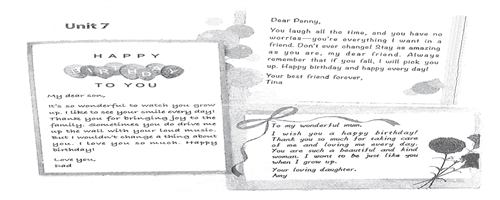The Four Great Inventions
四大发明
Printing
印刷术
1. Block Printing
1、木版印刷
With the inventions of paper and ink, stamper gradually became popular during the Jin Dynasty (265—420),which was the early form of Carved Type Printing.
自从纸、墨被发明后,印章在晋朝时期(265——420)逐渐流行起来,这也是调版印刷的前身。
Block Printing first appeared in the Tang Dynasty (618—907).
印刷首次出现于唐朝(618——907)。
The text was first written on a piece of thin paper, then glued face down onto a wooden plate.
文章第一次被写在一张薄薄的纸上,接着面朝下被粘在木板上。
The characters were carved out to make a wood-block printing plate, which was used to print the text.
文字被雕刻出来,制成了一块木版印刷板,这块板子之后被用来印刷文字。
Wood-block printing took a long time as a new block had to be carved for every page in a book.
木版印刷需要消耗很长的时间,因为一块新木板要刻上书中的每一页内容。
It took a lot of time and energy as well as materials to prepare for printing a book, but it worked more effectively afterwards.
印一本书在耗费大量时间和精力的同时,准备材料也很困难,但是之后,它的工作就会更加有效。
This technology was gradually introduced to Korea, Japan, Vietnam, and the Philippines.
这项技术后来逐步传入韩国、日本、越南和菲律宾。
Yet, Block Printing had its drawbacks---- all the boards became useless after the printing was done and a single mistake in carving could ruin the whole block.
尽管木版印刷也有它的缺陷——所有的木板在印刷之后都会作废,印刻中的任何一个小错误都会毁掉整本书。
The frontispiece of the world's oldest surviving book, the Diamond Sutra printed in the year 868,was discovered at Dunhuang Cave, along the Silk Road.
世界现存最古老的书籍,于868年印刷的《金刚经》的卷头插画在丝绸之路上的敦煌莫高窟被发现。
The book, in the form of a roll, is the earliest woodcut illustration in a printed book.
这部成卷的书籍是印刷书中最早的木刻插图绘本。
2. Movable Type Printing
2、活字印刷
Block Printing was a costly and time-consuming process, for each carved block could only be used for a specific page of a particulcr book, besides, a single mistake in carving could ruin the whole block.
木版印刷是一个耗钱又耗时间的过程,每一块雕刻的木板只能被用于一本书的一页,不仅如此,印刻中的一点小错误都会毁掉一整本书。
However movable type changed all of that.
然而,活字印刷改变了所有这一切。
In the Song Dynasty (960—1279),a man named Bi Sheng carved individual characters on identical pieces of fine clay.
宋朝时(960——1279),毕昇将不同的文字刻在不同的细黏土板上,每一块活字版上都有一个被刻在一小块湿黏土上的汉字。
Each piece of movable type had on it one Chinese character which was carved in relief on a small block of moistened clay.
当粘土经火烧硬后,活字板就变得又硬又耐用,并且哪里有需要就可以用到哪里。
After the block had been hardened by fire, the type became hard and durable and could be used wherever required.
每一块活字板都被粘在铁板上,这也是它们一开始的来源。
The pieces of movable type could be glued to an iron plate and early detached from the plate.
每一块汉字经过组装后都可以印刷一页,然后被分开,之后如果有需要就重新分配。
Each piece of character could be assembled to print a page and then broken up and redistributed as needed.
当印刷完成后,这些汉字版就被放到一旁,留作以后继续使用。
When the printing was finished, the pieces were put away for future use.
1000年时,现代的分页书取代了卷轴书。
By the year 1000, paged books in the modem style had replaced scrolls.
1340年时就出现了两种颜色(黑色和红色)的印刷。
Two color printing (black and red) was seen as early as 1340.
这项技术后来被传往韩国、日本、越南和欧洲。
This technology then spread to Korea, Japan, Vietnam and Europe.
之后,德国人约翰•古腾堡于15世纪40年代发明了金属制的活字印刷。
Later, German Johann Gutenberg invented movable type made of metal in the 1440s.
活字印刷术迅速发展。
Movable Type Printing developed very fast.
以黏土板的不同而区分,由木头、铅、锡和铜制成的粘土板逐步出现。
Based on clay type, type made of wood, lead, tin and copper gradually appeared.





 。
。